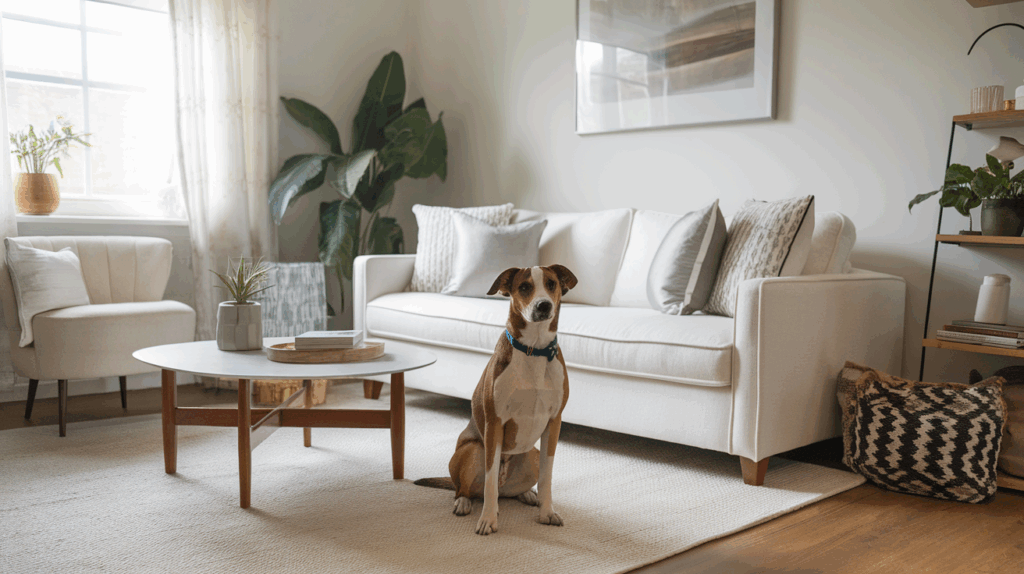Choosing the right flooring became really important to me once I had a dog at home.
Dogs can be tough on floors, with their nails, occasional accidents, and everyday messes. I quickly realized that not all flooring holds up the same.
Some types don’t work well. I’ve seen floors get scratched, stained, or even damaged by water, and it’s frustrating when they start looking worn too soon.
If your dog slips around a lot or you find your floors hard to clean, like I did, it might be because the material just isn’t pet-friendly.
In this blog, I’ll discuss the worst flooring choices for homes with dogs so you know exactly what to avoid.
I’ll review the most common materials that didn’t work for me and explain why they might not work for you and your pup, either.
With the right flooring, both you and your dog can enjoy a home that feels safe, happy, and comfortable.
Why Flooring Choice Matters for Dog Owners?
If you have a dog, your flooring matters more than you might think. Dogs walk, run, play, and sometimes have accidents, right on your floors.
Some types of flooring just aren’t built to handle that kind of wear and tear. They can scratch easily, stain from accidents, or hold on to smells no matter how much you clean.
Flooring also affects your dog’s comfort and safety. Slippery floors can make it hard for dogs to walk, especially older pups.
Hard surfaces might not be great for their joints, either. If the floor is too soft or holds dirt, it can quickly look dirty and wear out faster.
Choosing the right floor helps you avoid damage, save on cleaning, and keep your dog safe and happy.
It’s about finding a balance between what looks good and what works well for life with pets.
Worst Flooring for Dogs to Avoid
Not all flooring is suitable for a home with dogs. Some materials might look great at first, but they are not able to withstand the everyday messes, scratches, and wear that come with pets.
If you’re considering replacing your floors, it’s important to know which types to avoid.
1. Carpet
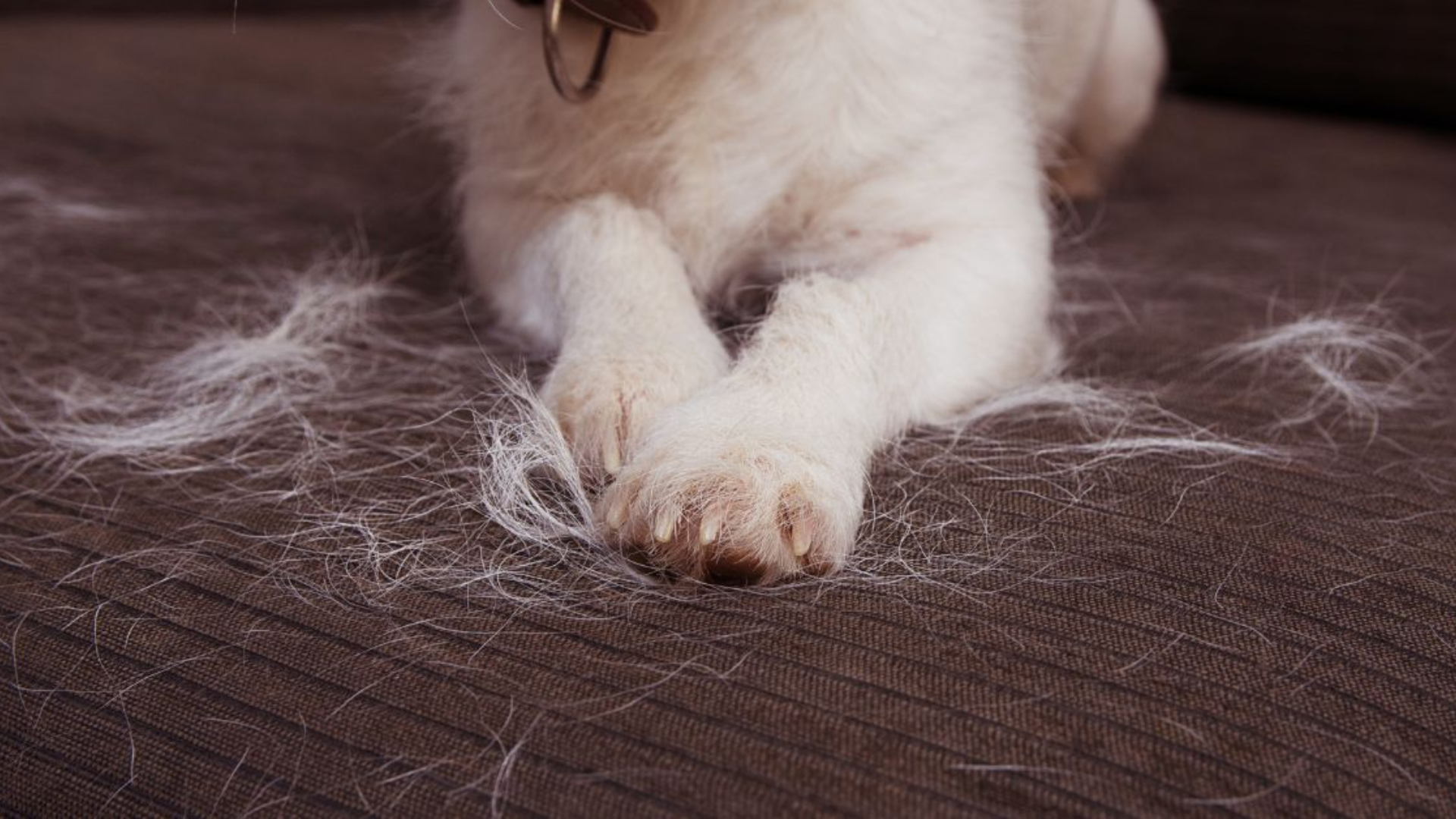
Carpet may feel soft under your feet, but it’s not the best choice if you have dogs.
Carpet can wear out quickly in homes with pets and may need to be replaced more often than other floors.
- Hard to Clean: Accidents, muddy paws, and dog hair can soak into the carpet, making it hard to get truly clean.
- Holds Odors: Even after cleaning, smells from urine or dirt can linger in the fibers.
- Traps Hair and Dander: Carpet can collect pet hair and allergens, which can affect air quality in your home.
- Easy to Damage: Dog nails can snag or tear the fibers, especially in cheaper carpet types.
2. Solid Hardwood
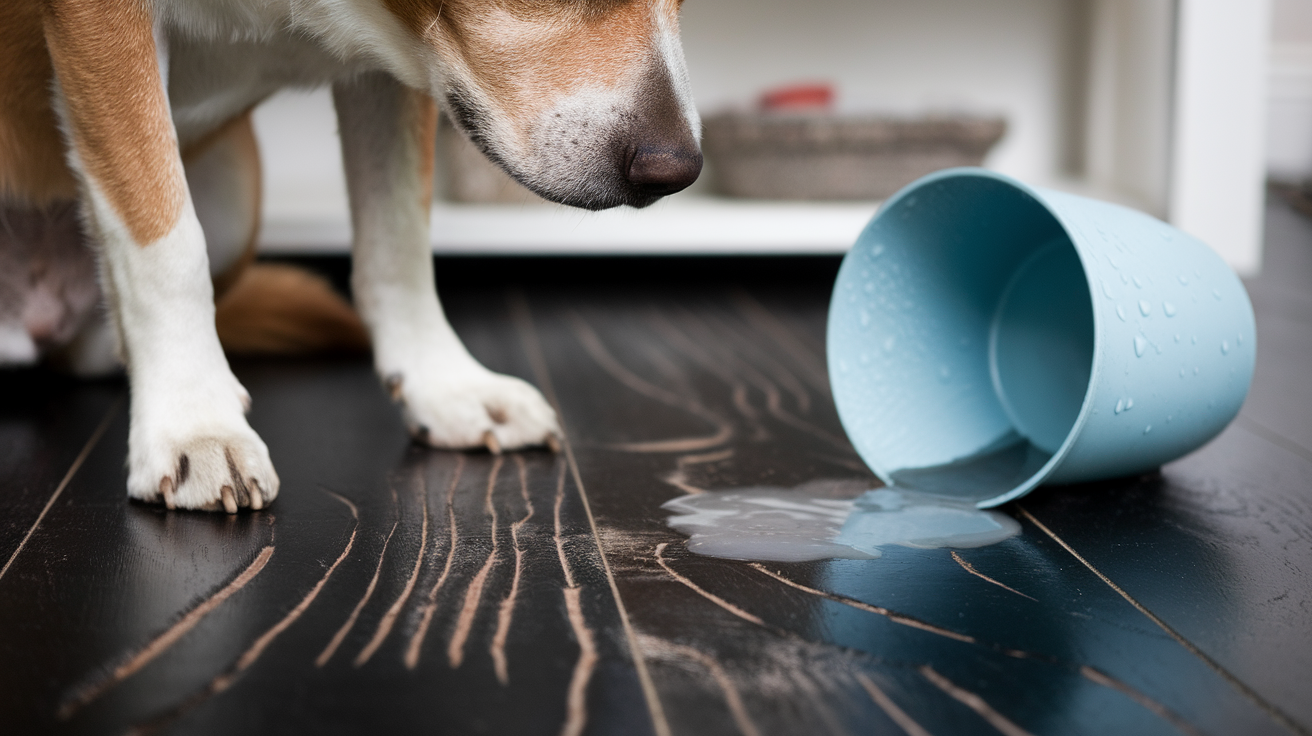
Hardwood floors are beautiful, but they can be tricky if you have dogs.
While some hardwoods are harder than others, most are not ideal for homes with dogs, unless you’re okay with regular upkeep.
- Scratches Easily: Dog nails can leave visible scratches, especially if your dog is active or heavy.
- Sensitive to Moisture: Even small spills or accidents can cause stains or warping if not cleaned right away.
- High Maintenance: To keep hardwood looking good, you may need to refinish it more often than you’d like.
3. Laminate Flooring
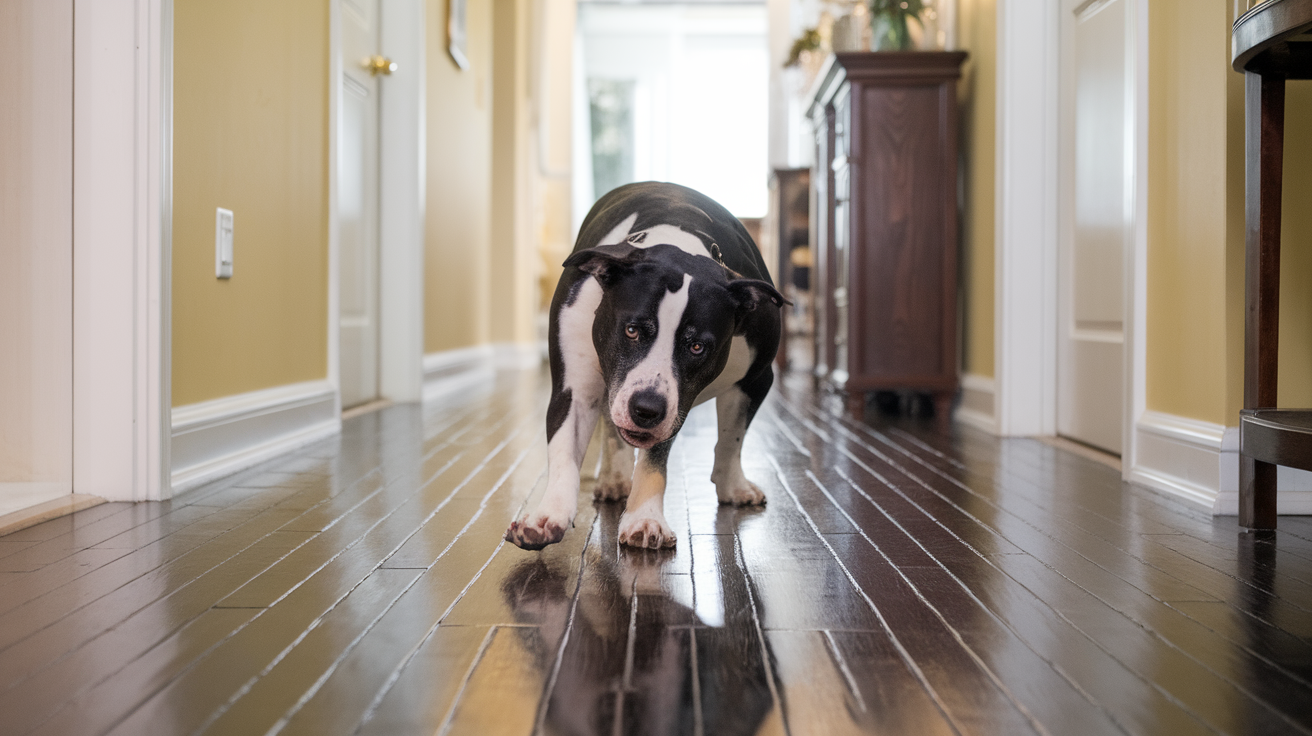
Laminate flooring looks like wood, but it has its own issues when dogs are around.
Although laminate may be more affordable, it’s not always the best option for a pet-friendly home.
- Very Slippery: Dogs can struggle to get traction, which may lead to slips or joint strain.
- Water Damage Risk: Laminate isn’t waterproof. Accidents or water bowls can cause it to swell or warp.
- Shows Scratches: Some laminate has a shiny finish that highlights every scratch or scuff mark.
4. Bamboo Flooring
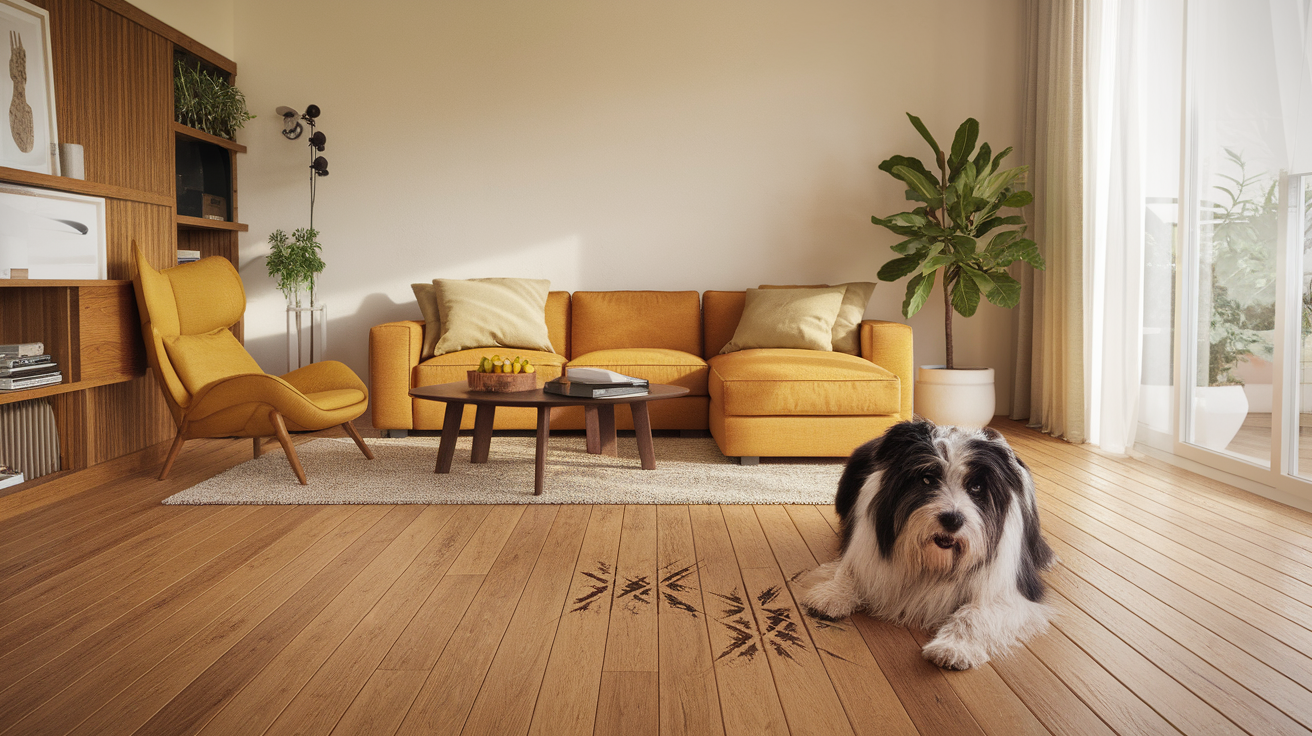
Bamboo is often called eco-friendly and durable, but not always when it comes to dogs.
Unless you pick a high-quality brand that’s designed for pets, bamboo can wear down faster than expected.
- Easily Scratched: Not all bamboo is made the same. Some types are soft and can get scratched easily.
- Not Fully Water-Resistant: Bamboo can stain or warp from moisture if not sealed properly.
- Inconsistent Quality: Some bamboo flooring is stronger than others, depending on how it’s made.
5. Cork Flooring
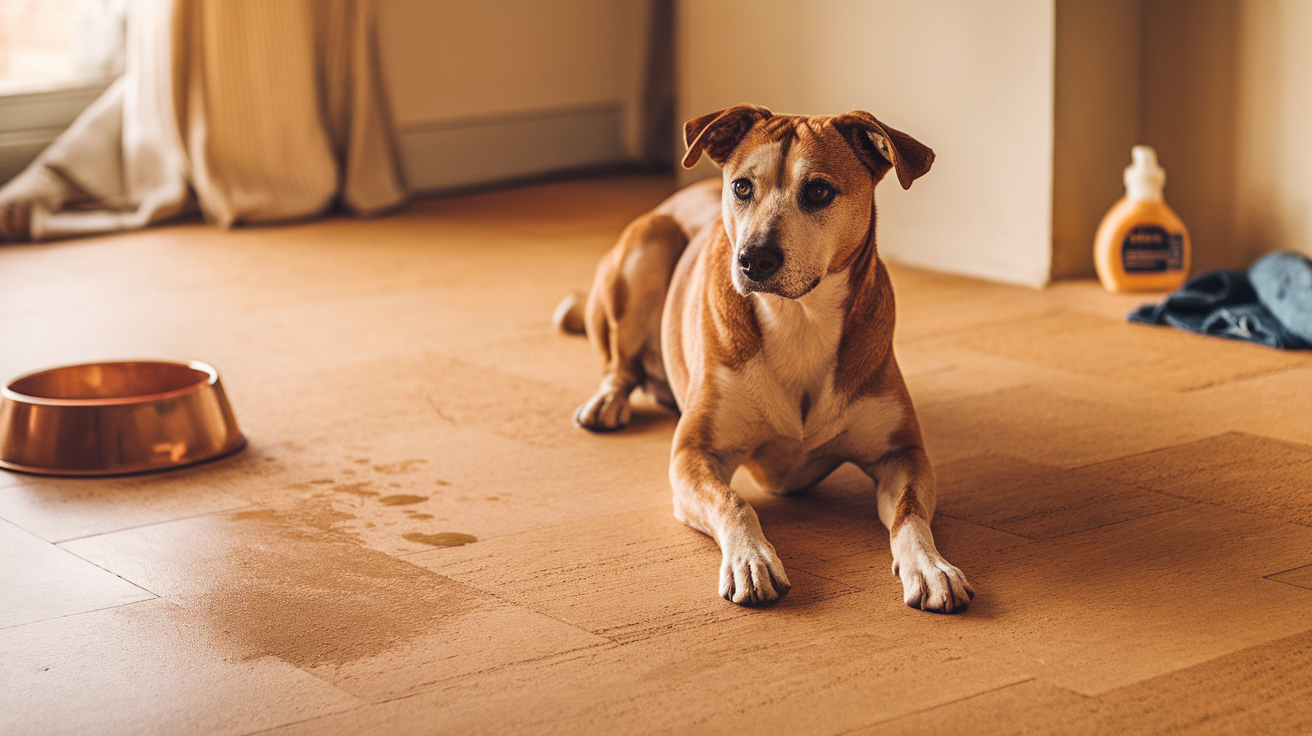
Cork feels soft and is good for sound control, but it may not hold up well with dogs. While cork is comfy and quiet, it’s not the most durable choice for dogs with active paws.
- Too Soft for Claws: Dog nails can dig into cork easily, leaving marks or holes.
- Soaks Up Moisture: Cork can absorb pet accidents and spill water if it’s not sealed tightly.
- Needs Frequent Sealing: To protect it, you’ll need to reseal cork floors regularly, which adds to upkeep.
6. High-Gloss and Polished Surfaces
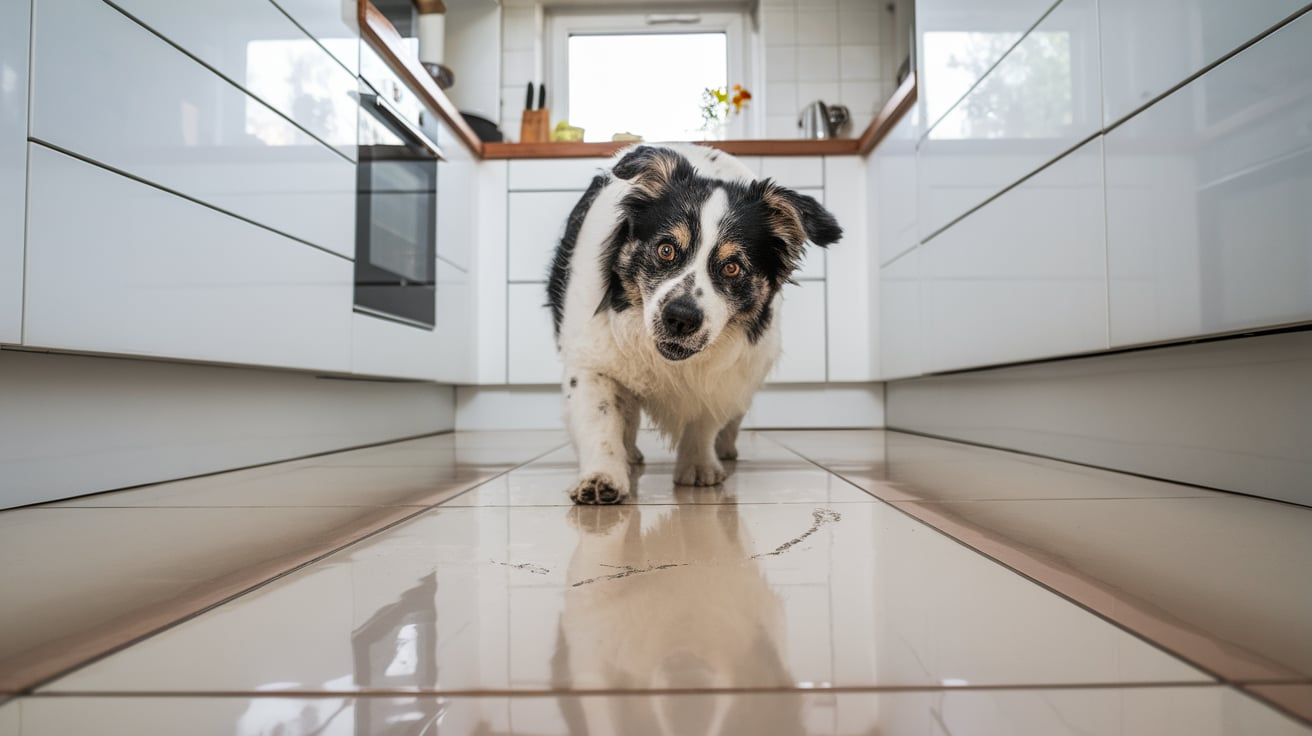
These include shiny tile, polished concrete, or any floor with a super smooth finish.
Even though they look sleek, these floors can cause your pet to experience discomfort and safety problems.
- Slippery Surface: Dogs may slide around and risk getting hurt, especially older dogs or large breeds.
- Visible Scratches: Shiny surfaces show every mark, making them hard to keep looking clean.
- Not Comfortable: Hard, cold surfaces aren’t fun for dogs to lie on and can strain their joints over time.
Choosing the wrong flooring can lead to lots of stress for both you and your dog. Scratches, stains, slipping, and extra cleaning are no fun.
But knowing what to avoid is the first step to picking a floor that works for the whole family.
In the next section, we’ll talk about what to look for in pet-friendly flooring that’s safe, strong, and easy to clean.
What Makes a Floor Bad for Dogs?
Not all flooring is created equal, especially when it comes to life with dogs.
Some floors might look stylish or be easy to install, but that doesn’t mean they’re good for your pet. A floor that isn’t dog-friendly can lead to scratches, stains, slips, or even injuries.
- Slippery Surfaces: Dogs need traction to walk safely. Floors that are too smooth, like polished tile or laminate, can cause your dog to slip, slide, or strain its joints.
- Easily Scratched Materials: Floors that can’t handle claw marks, like soft hardwood, bamboo, or cork, will quickly show damage and wear, especially with larger or more active dogs.
- Poor Water Resistance: Dogs have accidents, spill water bowls, or come inside with wet paws. Floors that soak in moisture, like carpet or cork, can develop odors, stains, and even mold.
- Hard and Uncomfortable Surfaces: Some floors, like concrete or stone, may be too hard and cold for your dog to rest on. This can be especially tough for senior dogs or breeds with sensitive joints.
- Hard to Clean: Floors that trap fur, dirt, or odors, like shag carpet or low-quality wood, make cleanup harder and faster damage more likely. Easy maintenance is key in pet homes.
The best dog-friendly floors are safe, tough, and easy to clean.
Knowing what to avoid will help you choose flooring that will withstand paws, claws, and everyday life while keeping your dog happy and healthy.
Dog-Friendly Flooring Options
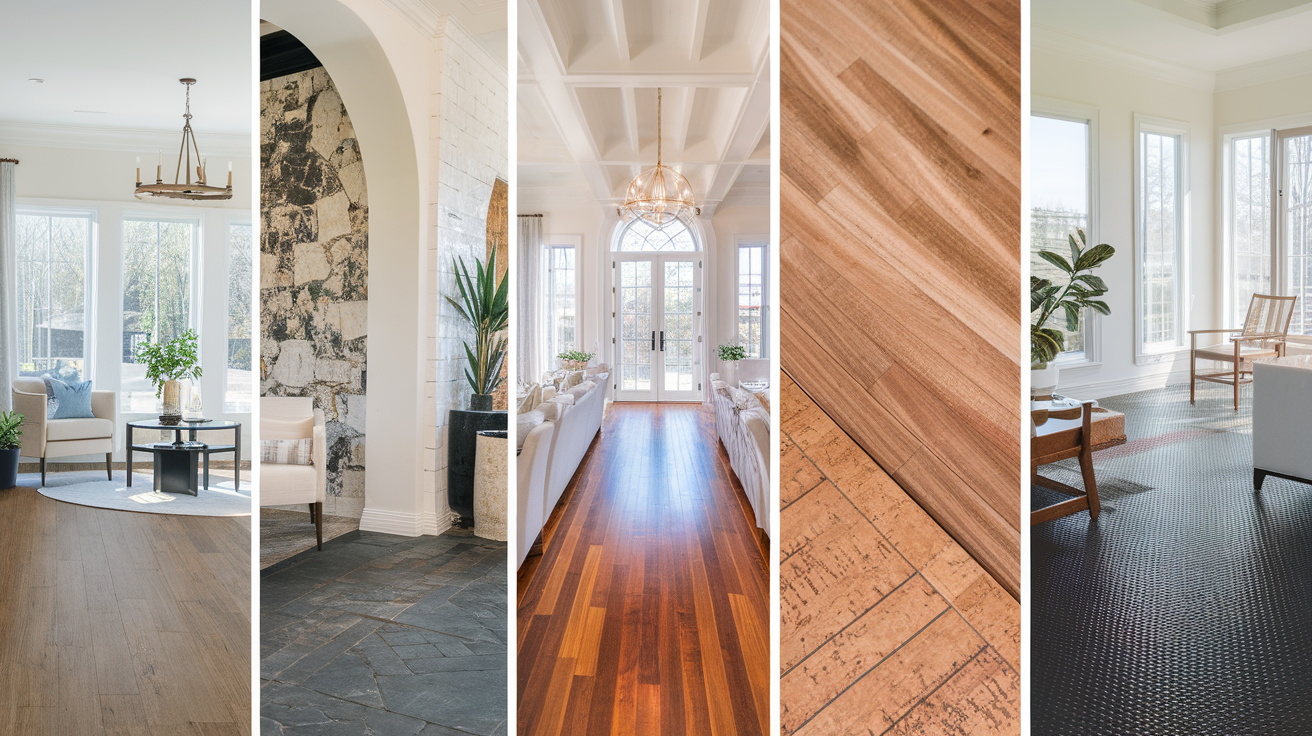
If you’re replacing old flooring or building a new space, it’s important to choose materials that can withstand your dog’s daily activities, such as running, playing, shedding, and the occasional accident.
The best dog-friendly flooring should be strong, easy to clean, slip-resistant, and comfortable enough for your pet to lie on.
| Flooring Type | Pros | Best For |
|---|---|---|
| Luxury Vinyl Plank (LVP) | Scratch-resistant, waterproof, easy to clean | All dog owners, especially high-traffic homes |
| Tile (Ceramic or Porcelain) | Extremely durable, waterproof, and cool underfoot | Hot climates or messy pups |
| Engineered Hardwood | More scratch- and moisture-resistant than solid hardwood | Homeowners who want a wood look with better durability |
| Stained Concrete | Super tough, easy to maintain, modern style | Modern homes, big dogs, indoor/outdoor spaces |
| Cork (Sealed Well) | Soft, quiet, eco-friendly, and some water resistance | Small or older dogs, if sealed properly |
| Rubber Flooring | Soft, non-slip, easy to clean, joint-friendly | Dog playrooms, garages, basements |
The best flooring for your home depends on your dog’s size, activity level, and habits. A good choice will keep your dog safe while helping your floors look great and last longer.
Whether you want the warmth of wood or the durability of tile, there are plenty of pet-friendly options. With the right flooring, both you and your dog can enjoy a cleaner, comfier home.
Helpful Tips for Dog-Friendly Flooring
Choosing the right flooring is a great start, but caring for it the right way makes all the difference.
Even with dog-friendly materials, daily habits and simple add-ons can protect your floors and keep them looking their best.
- Keep Your Dog’s Nails Trimmed:Long nails can scratch even the toughest floors. According to professional dog trainers, regular trimming helps prevent damage and keeps your dog from slipping.
- Wipe Paws at the Door: Place a doormat or towel near your entryway and wipe your dog’s paws after walks. This will reduce dirt, mud, and moisture tracked inside.
- Use Rugs and Runners: Place area rugs or runners in high-traffic areas like hallways and under food bowls. They help protect the floor and give your dog a better grip.
- Give Them a Comfy Spot: Hard floors can be tough on joints. Set up a soft dog bed or mat in their favorite spot so they aren’t lying directly on the floor.
- Clean Spills and Accidents Fast: Even waterproof floors can stain or smell if messes sit too long. Blot accidents right away and clean with pet-safe products.
- Sweep and Vacuum Often: Dog hair, dirt, and dust can act like sandpaper over time. Keeping floors clean helps prevent surface wear and keeps your home fresh.
With a few simple habits, you can protect your flooring investment and create a space where both you and your dog feel at home. A little effort goes a long way!
Conclusion
Picking the right flooring when you have a dog is one of the best choices you can make for your home.
Some floors may look great, but they don’t hold up to paws, scratches, spills, or playtime.
Knowing which types to avoid, like carpet, soft wood, and slippery surfaces, can save you time, money, and stress down the road.
Luckily, many dog-friendly options are strong, easy to clean, and comfortable for your furry friend.
Whether you choose vinyl, tile, or sealed concrete, the goal is to find something that works for both style and pet life.
Add in a few simple habits like trimming nails, using rugs, and cleaning up quickly, and your floors can stay looking great for years.
With the right flooring and a little care, your home will stay safe and cozy for both you and your dog.

